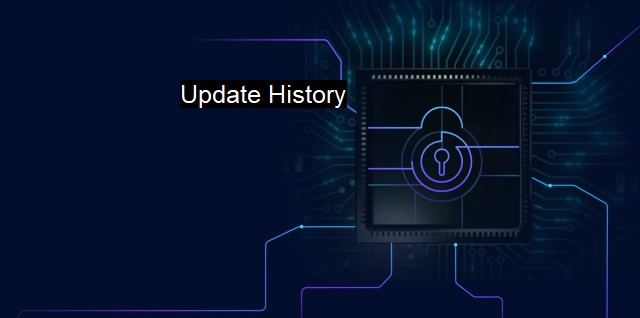What is Update History?
Staying Ahead of Cyber Threats: The Significance of Update History in Cybersecurity and Antivirus
Update History, within the context of cybersecurity and antivirus software, is an essential element that commplements the effective functioning of a system’s security infrastructure. This denotes a virtual record that functions as a depiction of updates that have been implemented over time within the cybersecurity and antivirus software perimeter. The chronology of update history allows for seamless transparency which provides the computable system, the antivirus program, and the user with essential ascertainable benefits.Updating cybersecurity software is indispensable to maintain the robustness of the system against contemporary cyber threats. Cybercriminals regularly devise numerable new infiltration strategies, leading to an indefinite rise of malware. Therewith, threats intensify and diversify by the day. It necessitates developers and vendors of antivirus software to periodically update the various constituents of the antivirus software - the program's interface, technical features, and malware definitions or virus database.
The sheer scale of these updates is both unavoidable and confusing. The fundamental record to manage all these sizes is Update History. This history plays a crucial role in visualising the implementation of updates, serving as a centralised record that outlines when and what updates were applied.
Conferring system administrators and users with a documented account of each update allows for a concrete approach to understand, manage and restore versions of the antivirus software. It evidently lessens downtime created by updates causing unexpected disruptions, providing instant visibility with regards to when an update was applied and what it contained. This readily shortens the system restore time, if consigned relevant, and helps maintain security consistency.
Another significant aspect of the Update History feature is through its contribution to a thorough audit. Update history eases the potentially complex process of combing through all the updates for audit purposes. Audits are conducted to keep a check on existing security measures for their efficacy and adherence to the designated standard or guidelines. With records in the update history, it is feasible to methodically inspect when the distinctive updates containing significant security patches were implemented. If a certain update's impact was unnoticed or deferred, this prompts a time-efficient solution, correcting the action at the earliest possible convenience and establishing upgraded security safeguards.
Similarly, in the event of troubleshooting, Update History could provide critical information about the system’s security condition before and after each update, thus pinpointing any potential dysfunction or inprobability. Identifying this could resolve circumstances where an update might have unintendedly caused disruptions or impaired the system's functioning.
The value of Update History goes beyond mitigating security vulnerabilities. The progress achieved through each update exemplifies the efficiency and responsiveness of the cybersecurity software providers. It indicates an active engagement of the service providers in continuously enhancing user security, therefore boosting stakeholders' trust in the solution provider's measures.
It advocates the compliant behavior of users contributing to responsible cybersecurity. Observation of frequent updates in the update history institutionalizes the importance of maintaining current antivirus defenses among users, reminding them about the prevalent threats they protect from and enforcing the regular maintenance of antivirus software.
Update History in the context of cybersecurity and antivirus software not only furnishes a transparent trail of the updates, explains their purpose, and ensures their effective enactment but elicits an effectual management process. It provides accountability, credibility, stimulus for regular software maintenance leading to enhanced cybersecurity infrastructure across domains. Providing a detailed narration of the competencies of these updates, it bolsters an unabated commitment towards secure and robust cybersecurity landscapes

Update History FAQs
What is update history in cybersecurity and antivirus?
Update history refers to the list of updates that have been applied to the cybersecurity or antivirus software. It shows when each update was released, what changes were made, and the version number of the software after the update.Why is it important to keep track of update history?
Keeping track of update history is important because it helps you identify any issues that have been fixed, new features that have been added, and vulnerabilities that have been patched. It also allows you to troubleshoot problems and ensure that your software is up-to-date and secure.Where can I find update history for my cybersecurity or antivirus software?
Update history can usually be found within the software itself or on the vendor's website. Check the software settings or preferences to see if there is an update history section. If not, visit the vendor's website and look for release notes or a changelog, which will provide a summary of the updates.How often should I check the update history for my cybersecurity or antivirus software?
It's a good idea to check the update history for your cybersecurity or antivirus software every time an update is released. This will help you stay informed of any changes or new features, as well as ensure that your software is always up-to-date and secure.| | A | | | B | | | C | | | D | | | E | | | F | | | G | | | H | | | I | | | J | | | K | | | L | | | M | |
| | N | | | O | | | P | | | Q | | | R | | | S | | | T | | | U | | | V | | | W | | | X | | | Y | | | Z | |
| | 1 | | | 2 | | | 3 | | | 4 | | | 7 | | | 8 | | |||||||